
In September 2022 Oxbow's bookshop and distribution buisness merged with Pen & Sword Books, a family run independent publisher of history books. The book distribution aspect of our business will continue to bring you some of the best books in the field of archaeology and related disciplines as Casemate UK. The Oxbow Books publishing imprint remains as a separate entity, still sold and distributed exclusively by us.

Format: Paperback
Pages: 144
ISBN: 9781842179901
Pub Date: 28 Feb 2011
Illustrations: 13 b/w figs
Description:
This book explores the themes of memory and mourning from the Roman deathbed to the Roman cemetery, drawing subject matter from the literature, art, and archaeology of ancient Rome. It brings together scholarship on varied aspects of Roman death, investigating connections between ancient poetry, history and oratory and placing these alongside archaeological and textual evidence for Roman funerary and commemorative rituals. A series of case studies centred on individual authors and/or specific aspects of ritual behaviour, traces the story of Roman death: how the inhabitants of the Roman world confronted their mortality, disposed of the dead, remembered the dead and praised the dead, thereby enhancing our understanding of Roman society.

Format: Paperback
Pages: 128
ISBN: 9781842179741
Pub Date: 28 Feb 2011
Description:
Research on the nature of cultural change in the Roman Empire has traditionally been divided between the Western and Eastern provinces. Papers in this volume aim to reunite the provinces by approaching the question of cultural change across the Empire through a range of material culture and historical sources focusing on the first 100 years of the foundation of a colony.
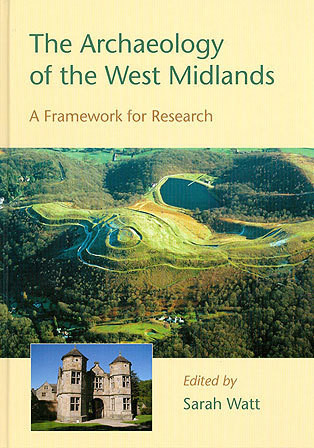
Format: Hardback
Pages: 272
ISBN: 9781842174272
Pub Date: 26 Feb 2011
Illustrations: col illus throughout
Description:
The West Midlands is a region of geographical, topographical and geological contrasts, forming disparate landscapes that are reflected in the nature and diversity of its rich archaeology. This ranges from evidence of its prehistory to the important industrial heritage of its major conurbations. This book represents an attempt by the region's archaeologists to draw these varying archaeological landscapes together to produce a research framework and agenda for their future management.
This is based on a comprehensive evaluation of the archaeological resource and has allowed new research directions to be followed and gaps in our knowledge to be filled. The book is arranged chronologically, each chapter addressing the important themes identified within each period. The colour images illustrate different aspects of the archaeology of the West Midlands and also include a series of distribution maps produced from data held in the region's Sites and Monuments Records and Historic Environment Records. The research agenda is an invaluable tool not only for those interested or involved in the archaeology of the West Midlands but also for those working in other regions, adding another important piece to the archaeological jigsaw of the British Isles and helping us to see the archaeology of the West Midlands more prominently in its wider context.
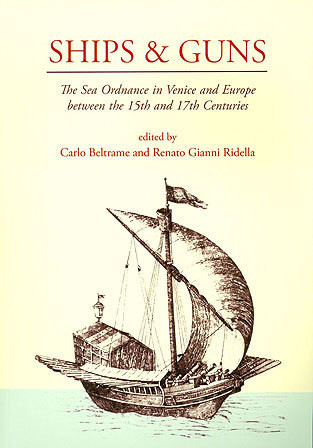
Format: Paperback
Pages: 168
ISBN: 9781842179697
Pub Date: 22 Feb 2011
Illustrations: b/w illus
Description:
Ships and Guns brings together experts from the field of historic artillery and underwater archaeologists to present a series of papers which focus on the development of naval ordnance in Europe and, especially, Venice, in the 15th17th centuries, as exemplified by the maritime archaeological resource. Subjects include Venetian ordnance in shipwrecks of the Mediterranean and Atlantic, the race to develop big calibres in the first war of Morea, Genoese ordnance aboard galleys in the 16th century, the strategic logistics of guns at sea during the Spanish armada of 1588 and ships and guns of the Tudor navy. Often specialists in ordnance study artefacts recovered from wrecks without a complete knowledge of the archaeological context from which they have been recovered.
Archaeologists investigating the context of the objects on the other hand, often do so with only a superficial knowledge of historic artillery. This volume hopes to redress the balance, and also to present a large amount of information, often concerning little-known wrecks, on this important but under-published subject area.
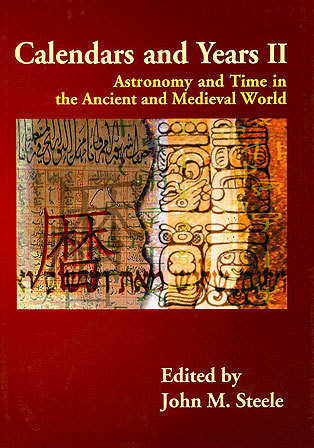
Format: Paperback
Pages: 176
ISBN: 9781842179871
Pub Date: 15 Feb 2011
Illustrations: b/w illus
Description:
Understanding the calendars used by ancient and medieval cultures is essential to the writing of history. Equally important, however, is understanding the basis upon which our current knowledge of these calendars rests. This second volume of Calendars and Years explores the calendars of ancient and medieval China, India, the ancient Jewish world, the medieval Islamic world, and the Maya.
Particular attention is given to the preserved evidence on which our understanding of these calendars lie, the modern historiography of their study, and the role of calendars in ancient and medieval society. Topics covered include the origin of the Chinese sexagenary cycle, evidence for the 364-day year in the ancient Jewish world, and the history of attempts to establish a correlation between Mayan dates and the Julian and Gregorian calendars. 176p, b/w illus (Oxbow Books 2011) Praise for Volume I: "Steele has assembled an essential foundation for the further study of calendariography and chronography in the ancient Near East and Egypt." Francesca Rochberg Journal for the History of Astronomy (November 2008) "It is a book from which there are absolute nuggets of incredible information to be mined." Peter A Clayton

Format: Paperback
Pages: 96
ISBN: 9782840482956
Pub Date: 15 Feb 2011
Illustrations: fully illustrated in colour throughout
Description:
This illustrated history presents a history of the Teutonic Order in the Middle Ages; its creation, its role in the Holy Land and on the shores of the Baltic Sea, its expansion in Prussia and the Baltic States. The Teutonic Knights were members of the order of the Teutonic Knights of the Hospital of the Blessed Virgin. They were a military-religious order of knights that restricted membership to Germans.
Part of the original Knight Hospitallers, under Hermann von Salza they split from the main branch and founded their own order, taking on a very distinctive white cloak bearing a stark black cross on the left shoulder. A very rich photo album, it includes images of documents, weapons, castles of the Order, with plans and beautiful colour photos of several current Order castles, including Marienburg. The battle of Tannenberg / Grunwald is also mentioned with great pictures of the reconstruction that was performed for the 150th anniversary of the Battle.
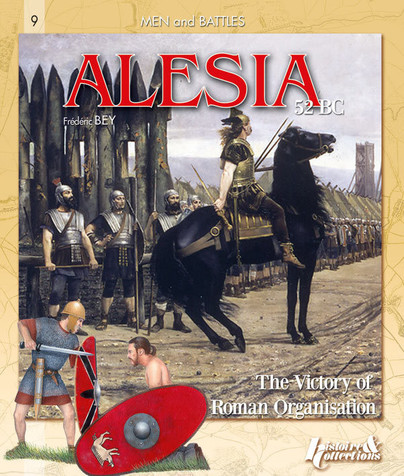
Format: Paperback
Pages: 80
ISBN: 9782352501237
Pub Date: 01 Feb 2011
Series: Men & Battles
Illustrations: fully illustrated throughout
Description:
The Romans had been at odds with the Gauls for a very long time indeed. Somewhere between 390 and 386 BC, a Senoni warchief called Brennus managed to capture Rome and ransom the city with his famous Vae Victis.The Urbs was then a city whose authority was only relative.
Nonetheless, the sack of Latium’s capital, highlighted by Livy in his History of Rome, helped to forge a centuries old loathing between the Romans, ashamed of being forced to capitulate to Brennus, and the Gauls, insolently proud of their triumph.The next step was part of the competition between the ‘Great Powers’ of that period. Independent Gaul was implicated in the global expansionist process of Roman might, which took place throughout the whole of the Mediterranean basin. Finally more pragmatically, Gaul merely became a political pawn in the hands of the triumvirs Pompey, Crassus and Caesar after they took over control of the Republic at the end of its decline, from the 60s BC onwards. It was therefore as a victim of what was at stake quite outside its control that Gaul so dramatically became part of Julius Caesar’s political strategy. Alesia was the final manifestation of this deep mistrust between two peoples.
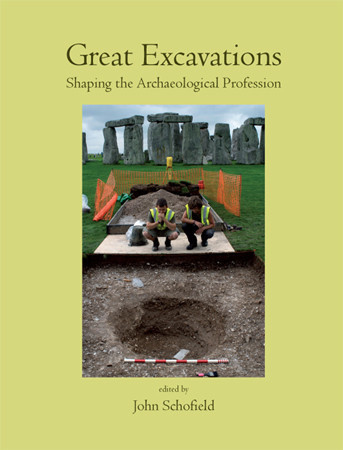
Format: Paperback
Pages: 368
ISBN: 9781842174098
Pub Date: 31 Jan 2011
Illustrations: 146 b/w and col illus
Description:
Great excavations inspire and capture the imagination of both the public and archaeologists alike; sites like Danebury, Sutton Hoo, Maiden Castle, Mucking and York conjure images of great discoveries and leaps in knowledge. But what was it like to participate in these excavations? What is the story of these projects, and what made them great?
This is a fascinating and entertaining retrospective documenting some of the seminal British excavations, assessing why they were so significant and why they persist in the memory and folklore of archaeologists today. It is also a social history of the profession and one that should stir memories and dispel (or corroborate) some urban myths that younger archaeologists may be aware of. An impressive list of authors and projects make this a significant contribution to the history and development of British archaeology over the course of the twentieth century. Fourteen chapters describe specific projects: Sutton Hoo, Birdoswald, Maiden Castle, Winchester, Owslebury, Danebury, The Breiddin, Wroxeter, Haddenham, Howe, York, Mucking, West Heslerton and Wharram Percy; six further chapters provide a thematic overview, covering early excavations, the IFA, English Heritage and the commercial sector. The world of archaeology has changed dramatically over the past twenty-five years, not least in becoming a profession. One of the clear messages of this book is the requirement for archaeology that great excavations continue in the future, to inspire another generation of archaeologists. The scope of archaeology may have changed, and the methodologies with it. The politics of excavation have changed too, with a more commercially driven and professional endeavour. But it is still, typically, the direct physical engagement with earth, artefacts, place and people (of the past and the present) that draws us in. This is why excavations matter, and why they can be great.
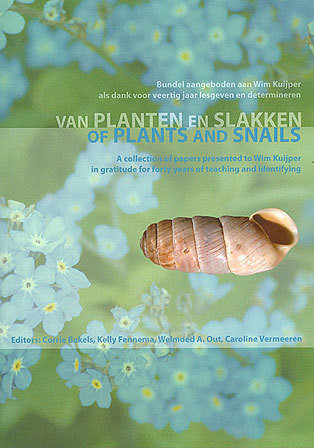
Format: Paperback
Pages: 284
ISBN: 9789088900518
Pub Date: 15 Jan 2011
Description:
This richly illustrated book contains 24 scientific articles on plants and molluscs written by 38 colleagues and former students of Wim Kuijper. The majority of these articles deal with one or a few species found on archaeological excavations, from corncockle via Glycymeris shells to forget-me-nots. A member of staff of the Faculty of Archaeology at Leiden University for 40 years, Wim has supervised students and advised colleagues in the fields of plant and mollusc remains with great enthusiasm and success.
They are very grateful for this help and this compilation is the result. The book contains both Dutch and English text. English contributions have a Dutch summary and Dutch articles have an English summary. All captions are in Dutch and English.
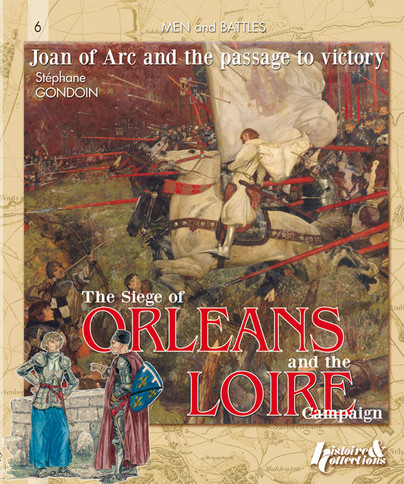
Format: Paperback
Pages: 80
ISBN: 9782352501190
Pub Date: 15 Jan 2011
Series: Men & Battles
Illustrations: 160 illustrations
Description:
The year is 1428, and the war between England and France has been raging for nearly one hundred years. The English control territory to the north of the Loire, but have no control of regions beyond the river. During the summer, the Duke of Bedford decides to eliminate his enemy and besieges Orléans.
From October 1428 to May 1429, fierce fighting continues around the town. The situation seems to be lost for the besieged, until the arrival of a young peasant girl named Joan. The exploits of the Maid of Orléans, considered France’s national heroine, lead to the making of her legend. She gained prominence when she overcame the dismissive attitude of veteran commanders and lifted the siege in only nine days, although she was later bunt at the stake for heresy at only nineteen years old.Inspired by her, the French rekindle their taste for victory and go from one success to another, until the decisive battle at Patay. This is an detailed, animated and richly illustrated book which enables the reader to relive these moments of great endeavour.
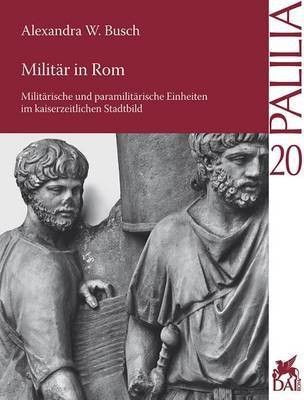
Format: Paperback
Pages: 148
ISBN: 9783895007064
Pub Date: 31 Dec 2010
Imprint: Reichert Verlag
Series: Palilia
Description:
During the Republican era, Rome was considered a demilitarized zone. Augustus's rule marked the first time soldiers were stationed in the capital of the Empire and it is therefore a crucial turning point between Republic and Principate. 10,000 to 40,000 soldiers now lived in Imperial Rome and they became an essential part of urban culture.
The theme of this book is the urban Roman army in all its facets; it covers the complexities of its cultural appearance, its effect on the urban population, and the importance of civilian life in the capital. For the first time the written, archaeological and visual sources on the military in Rome are put together and present a comprehensive picture of the life and work of urban Roman soldiers. German Text.
Rómverjasaga
Format: Paperback
Pages: 630
ISBN: 9789979654117
Pub Date: 31 Dec 2010
Imprint: University of Iceland Press
Description:
This is one of the oldest preserved sagas in Icelandic and is compiled from Latin sources, mainly Bellum lugurthinum and Coniutario Catilinae by Sallustius and Pharsalia by Lucanus. The first section is on the Jugurthine wars and then Catilina and his gathering of men. In the later section, the conflict between Pompey and Julius Caesar is depicted.
There are two versions of this saga that have been preserved. In this book, both of them are published letter by letter in compliance with the original text, supported by original Latin texts. The detailed introduction describes the main characteristics of the translation and all the manuscripts in the saga. Icelandic text.

Format: Hardback
Pages: 641
ISBN: 9781900971102
Pub Date: 31 Dec 2010
Imprint: Society for Libyan Studies
Series: Society for Libyan Studies Monograph
Description:
The Archaeology of Fazzan is a major series of reports on the archaeology and history of Libya’s south-west desert region.This volume contains reports and analysis on a series of excavations carried out between 1958 and 1977 by the British archaeologist Charles Daniels, lavishly illustrated by site plans and numerous colour photographs – particularly of the rich artefact assemblages recovered. The publication will be high profile and a significant landmark in work seeking to record information about Libya’s long-term Saharan heritage.
It will be an indispensable reference work to the nature of the Libya’s Saharan archaeology. The work will be of major value to the Libyan antiquities service and contracted archaeologists in concert with foreign oil companies, the NOC and the GMMR, and other similar major schemes.The key element of the story of Fazzan is the existence here of an early Libyan civilisation, the Garamantes, and the publication of the Archaeology of Fazzan volumes is putting in the public domain a rich dossier of information about their antecedents and descendants in this desert environment. This was a singularly important moment in Libya’s cultural history, with resonances also in Sub-Saharan Africa. There is great interest in the published volumes from specialists in Saharan, Sub-Saharan and Mediterranean archaeologists and historians as for the first time we can see in detail the effect of early Trans-Saharan links.
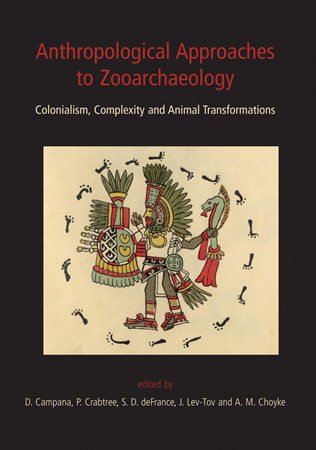
Format: Hardback
Pages: 320
ISBN: 9781842173909
Pub Date: 15 Dec 2010
Illustrations: 152 b/w illus, 53 tables
Description:
Animals in complex human societies are often both meal and symbol, related to everyday practice and ritual. People in such societies may be characterized as having unequal access to such resources, or else the meaning of animals may differ for component groups. Here, in this book, 28 peer-reviewed papers that span 4 continents and the Caribbean islands explore in different ways how animals were incorporated into the diets and religions of many unique societies.
The temporal range is from the Neolithic to the Spanish colonization of the New World as well as to modern tourist trade in indigenous animal art. The volume explores various themes including the interaction of foodways with complex societies, the interaction between diet and colonialism and the complex role that animals, and parts of animals, play in all human societies as religious, identity markers, or other types of symbols. Organized according to these themes, rather than geographic location or time period, the papers presented here crosscut such divisions. In so doing, this book presents an opportunity for scholars divided by geography especially, but also by temporal period, to explore each other's research and demonstrate that different archaeological settings can address the same problems cross-culturally.
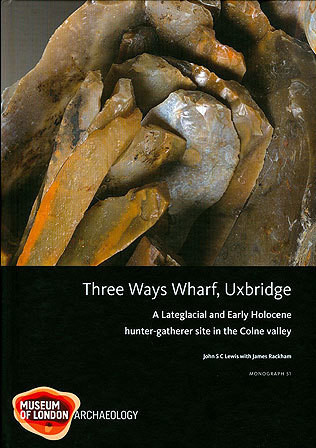
Format: Hardback
Pages: 226
ISBN: 9781901992977
Pub Date: 15 Dec 2010
Series: MoLAS Monograph
Description:
This eagerly awaited volume documents the evidence for human activity in the Colne valley at Three Ways Wharf, Uxbridge in the Lateglacial and Early Mesolithic periods. A series of five in situ lithic and faunal scatters, centred on hearth settings on local high points within the valley floor, belong to two main phases of hunter-gatherer activity. The earlier phase, characterised by Lateglacial bruised-edge 'long blades' of the north German Ahrensburgian technocomplex, associated with reindeer and horse, is dated to c 10,000 BP.
The succeeding Early Mesolithic phase is typified by broad, obliquely backed flint points, associated with a fauna dominated by red and roe deer, and dated some 800 radiocarbon years later at c 9200 BP. Detailed analyses of the important faunal and lithic assemblages, bolstered by an extensive refitting programme, have been fully integrated to provide new and striking behavioural explanations. These hunter-gatherer groups can now be seen as groups of people intent on pursuing their own independent and socially defined goals, and no longer solely in terms of their adaptive responses to environmental pressures. Three Ways Wharf will come to take its place alongside other iconic sites of the period such as Star Carr, Broxbourne and Thatcham.

Format: Hardback
Pages: 569
ISBN: 9780904220629
Pub Date: 01 Dec 2010
Description:
Lankhills and its late Roman cemetery have played a significant role in the understanding of the military in civilian areas of Roman Britain in the fourth century, and these new excavations double the number of graves explored and add to the variety of finds represented. New analytical techiques show that some of those buried were immigrants from other parts of Europe and perhaps even North Africa. The new excavations revealed a further 307 inhumation graves (plus six more partly excavated previously) and 25 more cremation burials.
The most spectacular individual burial contained a gilded and inscribed crossbow brooch, silver gilt belt fitting and decorated spurs, a unique assemblage for Roman Britain. The report provides a full catalogue of the graves and a comprehensive study of the finds.
















